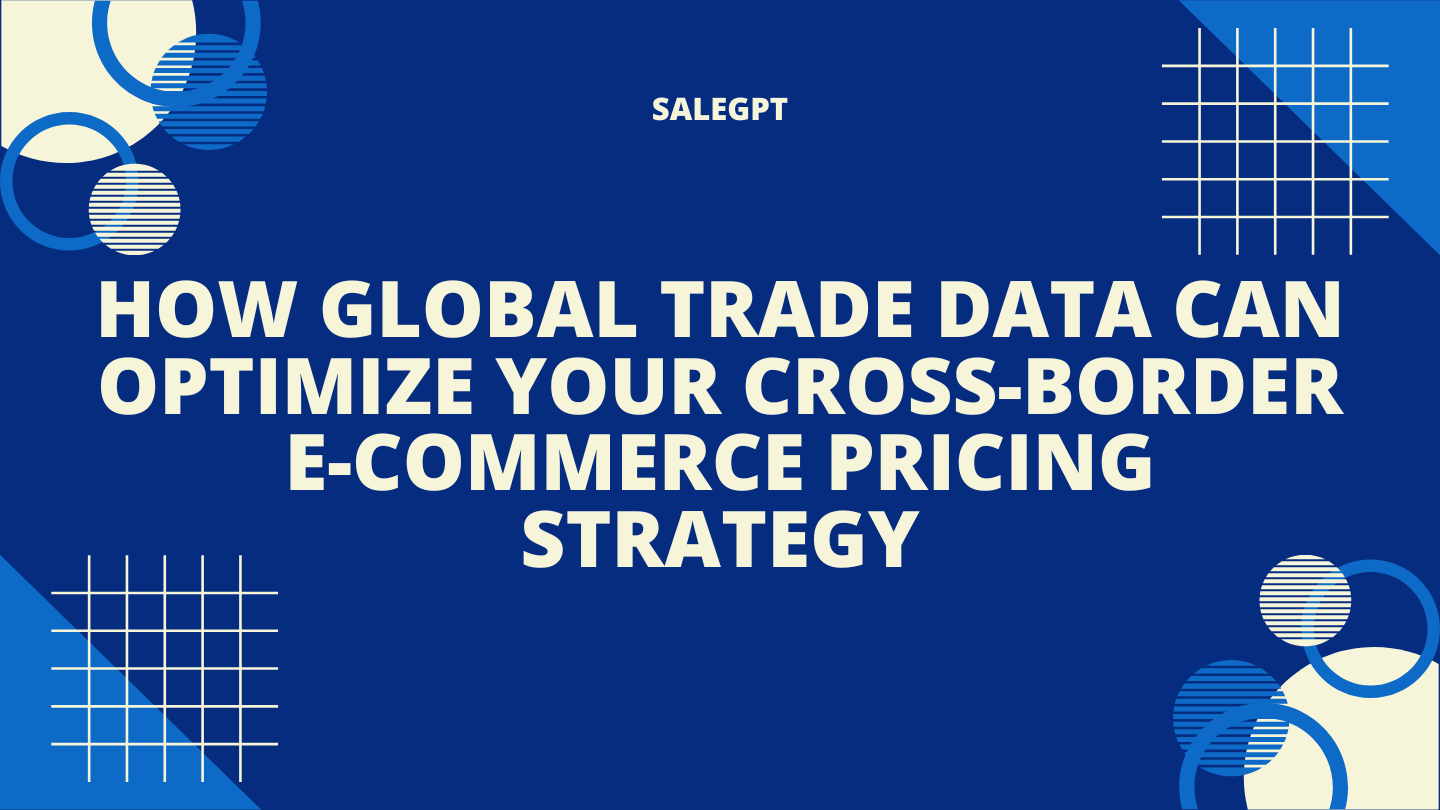
The Challenge of Pricing in Cross-Border E-Commerce
Pricing is one of the most important factors affecting conversion rates in e-commerce. However, setting the right price for products in international markets can be difficult, especially when dealing with different currencies, tariffs, duties, and varying consumer expectations. Optimizing your pricing strategy is essential for maximizing revenue while remaining competitive in global markets. One of the most powerful tools at your disposal for improving pricing strategies isglobal trade data.
By analyzingcustoms dataandmarket trends, e-commerce businesses can gather insights into pricing dynamics, competitor pricing strategies, and regional demand, allowing for more informed pricing decisions that improve sales performance and profitability.
How Global Trade Data Enhances E-Commerce Pricing Strategies
Understanding Tariffs and Duties
One of the key challenges for cross-border e-commerce businesses is dealing with tariffs and duties. Customs data provides crucial information about applicable tariffs and duties for products being imported or exported in specific regions. By understanding these trade barriers, businesses can optimize their pricing strategies to account for these costs, either by adjusting product prices or factoring the fees into their logistics planning. This ensures that businesses remain profitable while offering competitive prices.
Tracking Competitor Pricing
Global trade datareveals valuable insights into competitors’ activities, including the prices they are setting for similar products. By tracking import/export data, businesses can identify the pricing strategies of their competitors, including where they’re positioning themselves in different markets. This insight helps companies adjust their pricing to remain competitive or find areas where they can offer better value to customers.
Adapting Pricing to Regional Demand
Different markets have different levels of price sensitivity. By analyzingmarket demand datafrom customs reports, businesses can identify regions where there’s a higher willingness to pay for certain products. For example, if data shows high demand for luxury items in one region, businesses can price these items higher in that market while offering lower prices in other regions with less demand. This regional pricing strategy helps businesses tailor their approach to maximize revenue across different markets.
Steps to Leverage Global Trade Data for Pricing Optimization
Analyze Tariff and Duty Information
UseTradeLink AI Insightsto examine tariffs and duties for your products in different regions. By factoring these fees into your pricing, you can avoid unexpected costs and ensure that your pricing remains competitive in every market.
Monitor Competitor Pricing
Track competitors’ pricing using customs data to gain insights into how they’re pricing similar products in the same markets. Use this information to adjust your prices, ensuring you remain competitive while also accounting for your unique value proposition.
Use Regional Demand Insights to Adjust Pricing
Use market demand data fromglobal trade insightsto adjust your pricing strategy based on regional preferences and willingness to pay. This helps you optimize your pricing in high-demand markets, increasing both conversions and profitability.
Real-World Example: A Global Electronics Retailer Optimizing Prices
A global electronics retailer selling smartphones and accessories usedcustoms datato analyze the import volume of mobile devices across multiple regions. They discovered that smartphones in Southeast Asia were subject to lower tariffs, while those in Europe faced higher import duties. By adjusting their pricing strategy accordingly, they were able to maintain competitive prices in Europe and increase sales in Southeast Asia, resulting in a 20% increase in overall revenue.
Data-Driven Pricing for Cross-Border E-Commerce Success
Global trade data is an essential resource for businesses looking to optimize their pricing strategy in cross-border e-commerce. By leveraging insights fromcustoms data, e-commerce businesses can stay competitive, improve margins, and increase sales in international markets.
Ready to optimize your pricing strategy? Start usingSaleAI’s TradeLink AI Insightstoday to leverage global trade data for smarter pricing decisions and higher profits.


